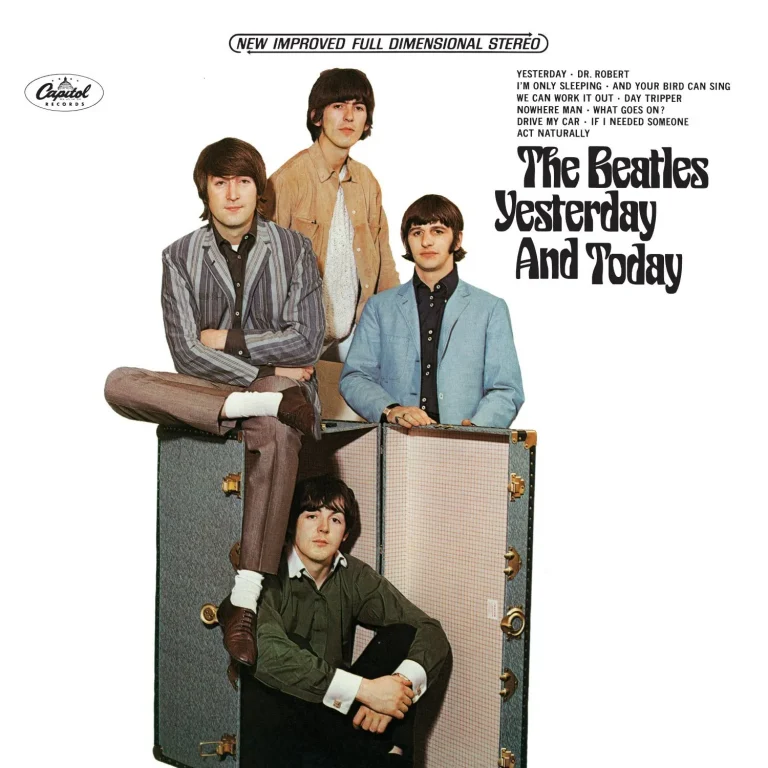
May 1966
Designing the cover of “Yesterday And Today” • From the “butcher” cover to the “trunk” cover
Last updated on December 23, 2023

May 1966
Last updated on December 23, 2023
Article April 29, 1966 ? • Robert Whitaker shoots the "trunk cover" of "Yesterday And Today"
Session Apr 29, 1966 • Recording "Eleanor Rigby", "I'm Only Sleeping"
Article May 1966 • Designing the cover of "Yesterday And Today" • From the "butcher" cover to the "trunk" cover
Concert May 01, 1966 • NME Annual Poll-Winners' All-Star Concert
Interview May 1966 • The Beatles interview for Flip Teen Magazine
Next article May 02, 1966 • Paul McCartney meets Bob Dylan and The Rolling Stones at Dolly's
Yesterday and Today (2014 reissue)
By The Beatles • Official album
Likely on April 29, 1966, The Beatles had an impromptu photo shoot with Robert Whitaker at Brian Epstein’s NEMS Enterprises offices in London. Whitaker took advantage of a blue steamer trunk that was available in the office, and took several photos of the band.
Capitol Records was assembling a new Beatles album, combining tracks from recent UK releases that had not yet been released in the US, and tracks from the upcoming “Revolver” album. The album was to be named “Yesterday and Today“, and Capitol requested a photo for the cover. Epstein sent them one of the photos from the steamer trunk session. Upon receiving the photo, Capitol’s art department quickly came up with a cover design, reusing the blue color scheme from the 1965 US single for “Yesterday.”
Epstein had instructed Capitol to review and approve the cover design before it was finalized. When he received the proposed cover, he rejected it.
Whitaker had also recently taken photos of The Beatles dressed as butchers, holding raw meat and mutilated plastic baby dolls, for an art project. John Lennon insisted that one of these butcher photos be used for the cover, even though Epstein was opposed to the idea. Epstein was forced to submit the butcher photo to Capitol.
Knowing that Epstein had rejected the first cover design, Capitol’s art department designed three alternate covers, using the same photo from the steamer trunk session. When Capitol received the new “butcher” photo, management was concerned. Capitol’s president Alan Livingston called Brian Epstein to ask him to change his mind, but Epstein refused.
The sales department came to me and said, ‘Look at this album cover, how can we do this?’ And I said, ‘We can’t put that out.’ I called Brian in London and I said, ‘Brian, I can’t put this album out with this cover, I need another cover.’ And he argued with me; he wouldn’t listen.
Alan Livingstone – From “The Beatles Rubber Soul to Revolver“ by Bruce Spizer
In 2002, Livingston explained that his main contact was Paul McCartney, not Brian Epstein, with Paul explaining to him the cover was an act of protest against the Vietnam war.
The reaction came back that the dealers refused to handle them. I called London and we went back and forth. My contact was mainly with Paul McCartney. He was adamant and felt very strongly that we should go forward. He said ‘It’s our comment on the war’. I don’t know why it was a comment on the war or if it would be interpreted that way.
Alan Livingstone – Interview with MOJO, February 2002
Meanwhile, Capitol designer George Osaki liked the butcher photo and began designing a new cover. On May 30, 1966, Epstein travelled to New York to prepare for The Beatles’ upcoming US tour. This gave Capitol one last opportunity to try to convince him to change his mind about the cover.
On May 31, Epstein met with Tom Morgan from Capitol, who showed him the four cover designs: the butcher cover and the three alternate trunk covers. Epstein called London (most likely to speak to The Beatles) and confirmed his decision to use the butcher photo. Capitol then sent a message to the manufacturing plants, authorizing them to start production.
There was a bit of a miscommunication between Alan Livingston, who wanted to produce a limited run of albums to test the reaction of distributors, and Capitol’s production department, which went ahead and produced a full batch, considering the short delay to produce the records in anticipation of the June 15 release. The album covers were printed from June 2 to 5, and the records were pressed and inserted into the Butcher Covers from June 4 to 7.
By June 7, 750,000 copies of the album had been pressed, packaged, and shipped to distributors. However, Capitol began to receive negative responses from all parties involved. Alan Livingstone decided to change the cover design, and George Osaki designed a new cover using one of his early trunk covers and the psychedelic font used on the butcher cover.
On June 10, Capitol launched “Operation Retrieve“, recalling all copies of the LP from distributors to replace the offending image, with the new cover.
Even more details about the design of the “Yesterday And Today” cover in “The Beatles Rubber Soul to Revolver“ by Bruce Spizer.
At this time, Capitol Records were pestering us to provide new pictures for the cover of Yesterday … And Today, an eleven-track US compilation album of assorted songs from the UK album Revolver and elsewhere. Capitol tended to re-package The Beatles’ UK albums, offering an average of three or four tracks less than EMI product sold in Britain, a policy which The Beatles thought was stingy. George expressed their unhappiness with the Capitol situation: “When the American company released albums like Yesterday … And Today, we didn’t have anything to do with them. They always put out more albums in the States. If we put out two singles and two albums, they’d convert them to three albums by keeping the extra tracks.” If this had not been one of the “filler” albums, The Beatles might have become more involved in the choice of cover photo. As it was, John was pushing Brian Epstein to publish the “butcher session” pictures as widely as possible and the other three were content to leave the decision over the Capitol cover to Epstein. Only half-jokingly, George told Whitaker: “We won’t come to any more of your sick picture sessions, Bob.”
Holding his cigarette lighter close to Whitaker’s sheet of transparencies, Epstein told me: “What I’d really like to do is set fire to the whole lot and never let them see the light of day.” I agreed wholeheartedly that the “butcher session” might well be disastrous to the career of any lesser band but I had to say that The Beatles were big enough to withstand the bad publicity. A year earlier, Epstein would have stood his ground and destroyed the transparencies. Like the rest of us, he was sickened by some of the stuff Whitaker had taken but he bent under pressure from John, chose one of the less offensive shots where The Beatles were grinning rather than sneering, and sent the transparency to Alan Livingston at Capitol. He released several other similar shots to EMI in London to use in press advertising for the new UK single which coupled ‘Paperback Writer’ and ‘Rain’ and he handed one to Disc And Music Echo, which published it in colour on the front cover of the June 11 issue.
Tony Barrow – From “John, Paul, George, Ringo & me: the real Beatles story“, 2006
We took the pictures in London at one of those photo sessions. By then we were really sort of beginning to hate it. A photo session was a big ordeal, and you had to try and look normal, and you didn’t feel it. And the photographer was a bit of a surrealist, you know? And he brought along all these babies and pieces of meat and doctors’ coats, so we really got into it, and that’s how we felt, eurgh! So we sort of — I especially — pushed for it to be an album cover, just to break the image, you know?
John Lennon – From John Lennon on the Dennis Elsas Show, WNEW-FM, 28 Sept 1974.
I don’t like being locked into one game all the time, and there we were supposed to be sort of angels. I wanted to show that we were aware of life, and I really was pushing for that album cover. I would say I was a lot of the force behind it going out and trying to keep it out.
I especially pushed for it to be an album cover, just to break the image. And it got out in America: they printed it and about 60,000 got out, and then there was some kind of fuss, as usual, and they were all sent back in or withdrawn, and they stuck that awful-looking picture of us looking just as deadbeat but supposed to be a happy-go-lucky foursome. We tried to do something different. We would design a cover or have control of more of our own covers in England, but America always had more albums so they always needed another picture, another cover.
John Lennon – From “The Beatles Anthology” book, 2000
I don’t think I ever quarrelled with them musically at all. The only time I ever really came to blows with them was over something quite different, which was a record sleeve. It was one that was never issued here. They were dressed up as butchers, and it came out in America. It was their idea of a joke.
George Martin – From interview with Melody Maker, August 21, 1971
Having finished that particular picture, it was snatched away from me and sent off to America. It was reproduced as a record cover without ever having the artwork completed by me. The cover layout was somebody else’s conception. It was a good idea to ban it at the time, because it made no sense at all. It was just this rather horrific image of four Beatles, whom everybody loved, covered in raw meat, the arms, legs and torsos of dolls, and false teeth. But they are only objects placed on the Beatles, rather like making a movie. I mean what you want to read into it is entirely up to you. I was trying to show that the Beatles were flesh and blood.
Robert Whitaker – From Wikipedia
What you say? This is the famous “butcher” cover. I’ts too horrible e blaahhh to even be seen! (So don’t look) but can sell it for 11 million dollars. My original idea for the cover was better – decapitate Paul – but he wouldn’t go along with it.
John Lennon – 1978
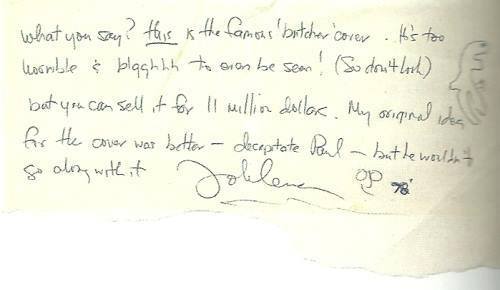
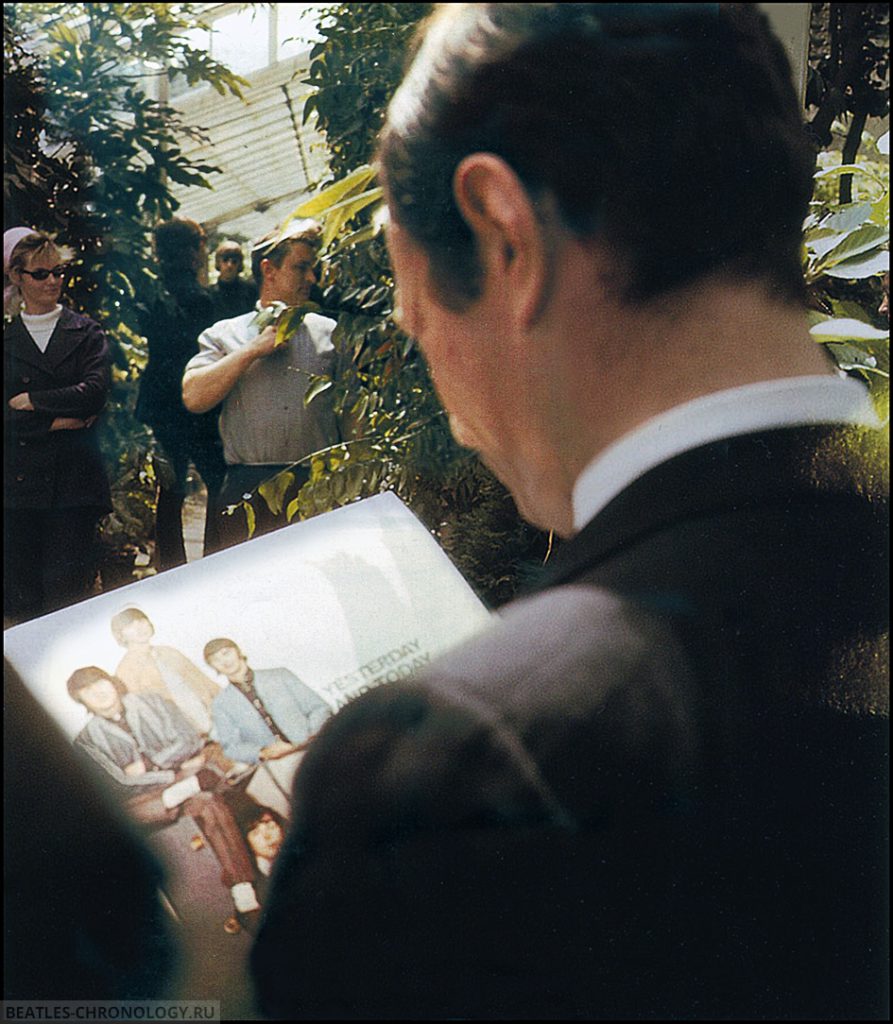
The original “trunk” cover, which was rejected by Brian Epstein:
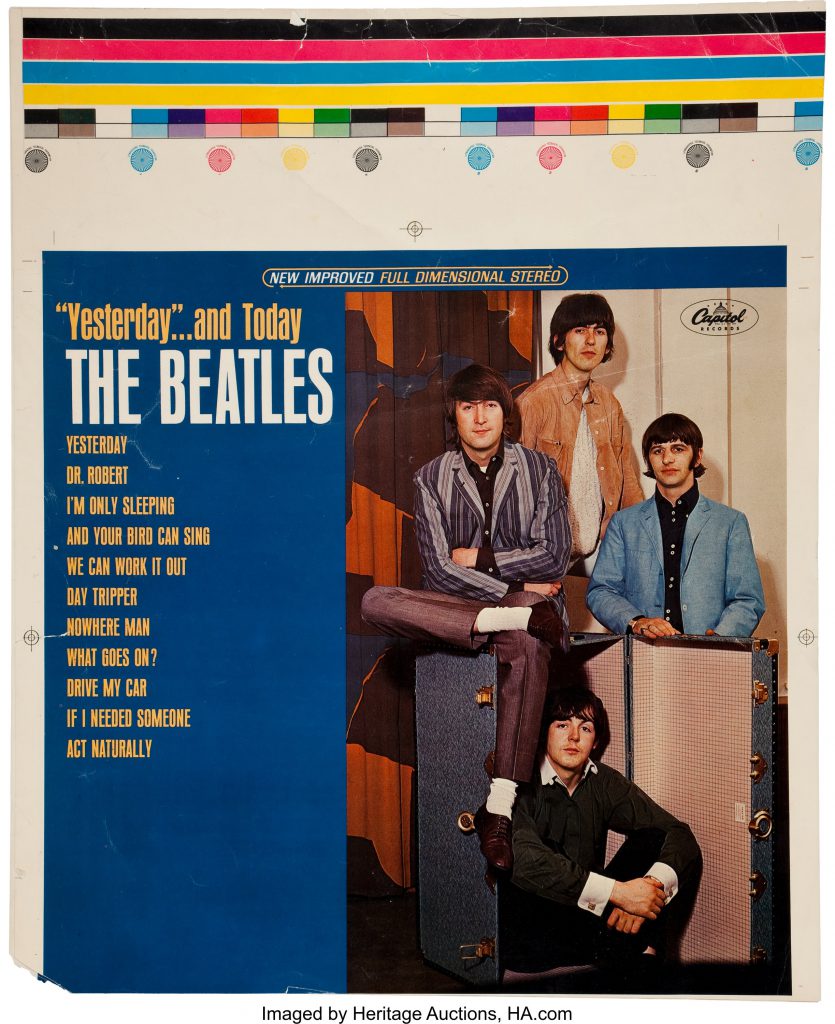
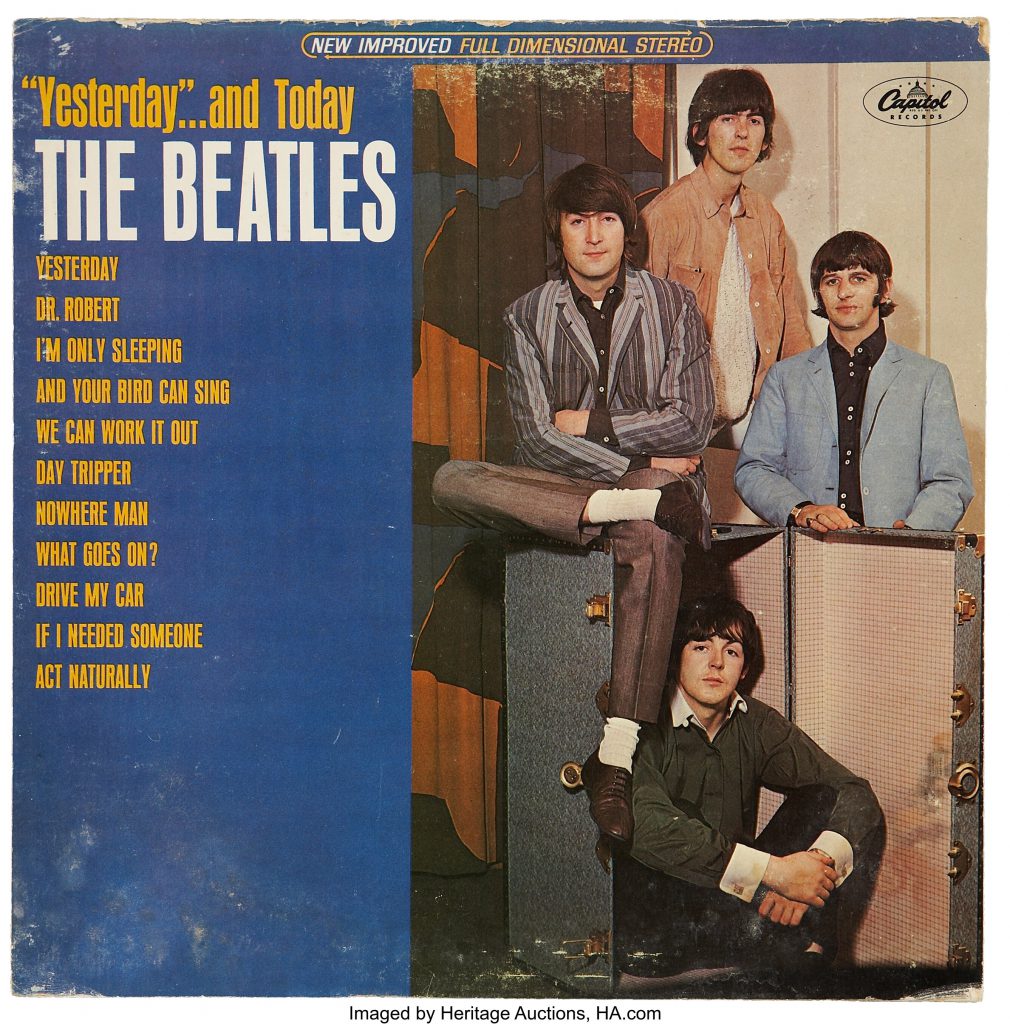
I write this as a true description of the history of the “YESTERDAY AND TODAY” blue, yellow and white, Beatles album (alternate) cover internal promotional slick.
This Capitol Records internal mounted “test” slick was given to me in the fall of 1966, coincident with the recall of Capitol Records’ released “Butcher Cover” version of the album “Yesterday and Today”. I received this along with the actual butcher cover mounted slick (which I still own) and promotional “butcher cover” posters as a gift from “Mama” Cass Eliot (Cassandra Cohen), who was at that time with “THE BIG THREE” , just prior to her association with the “MUGWUMPS”, and finally the “MAMAS AND THE PAPAS”.
Cass was both a neighbor and close personal friend; she gave me these covers as a unique example of chaos in the recording business. She was a major BEATLES fan and thought it great / funny that they had caused CAPITOL to scramble.
The slick has been in my possession since that time…. received directly from CAPITOL to Cass
Jerry Ponce
From The Beatles Yesterday and Today Alternate Cover Promotional Slick | Lot #49248 | Heritage Auctions (ha.com)
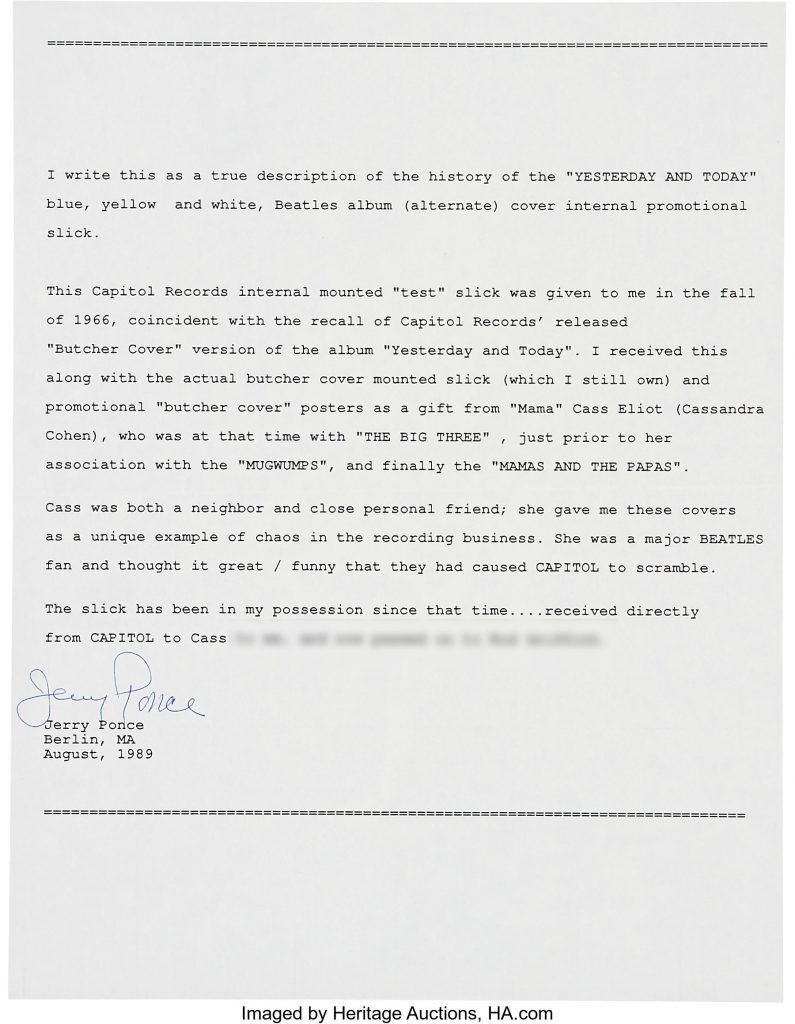
The “butcher” cover:
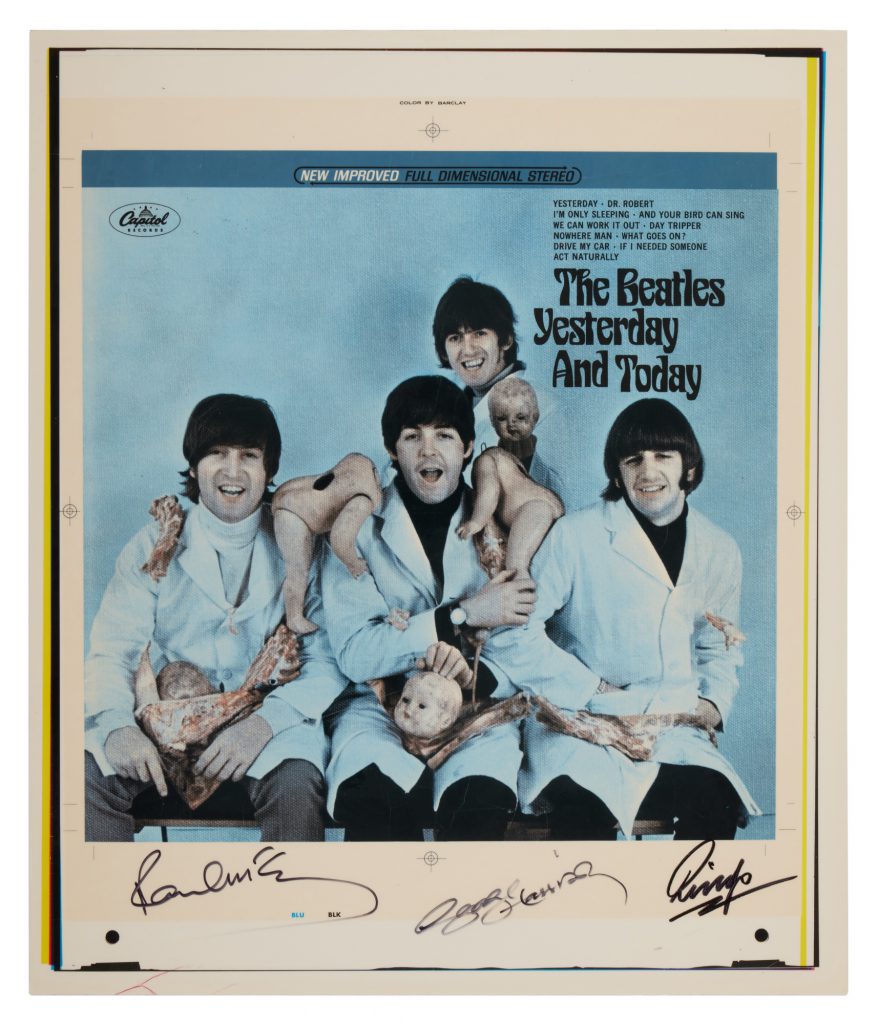
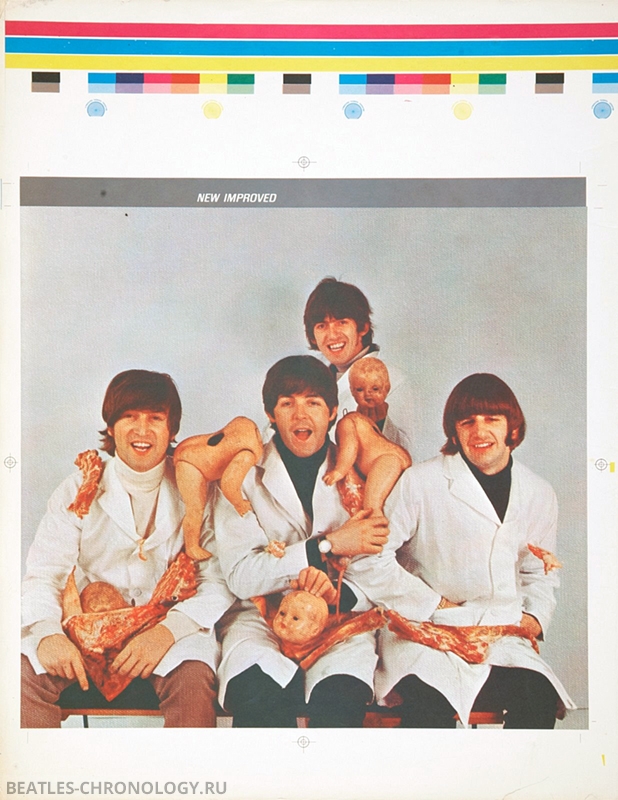
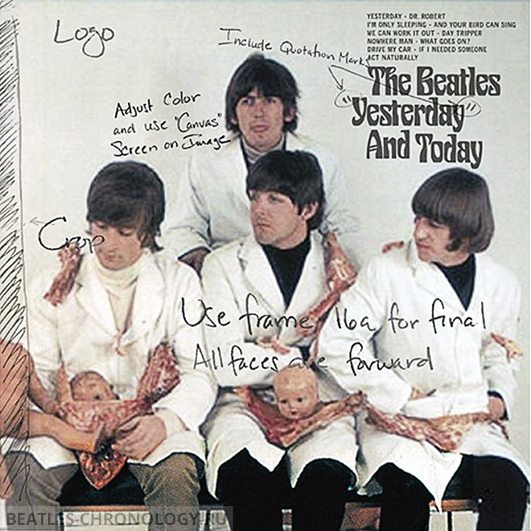
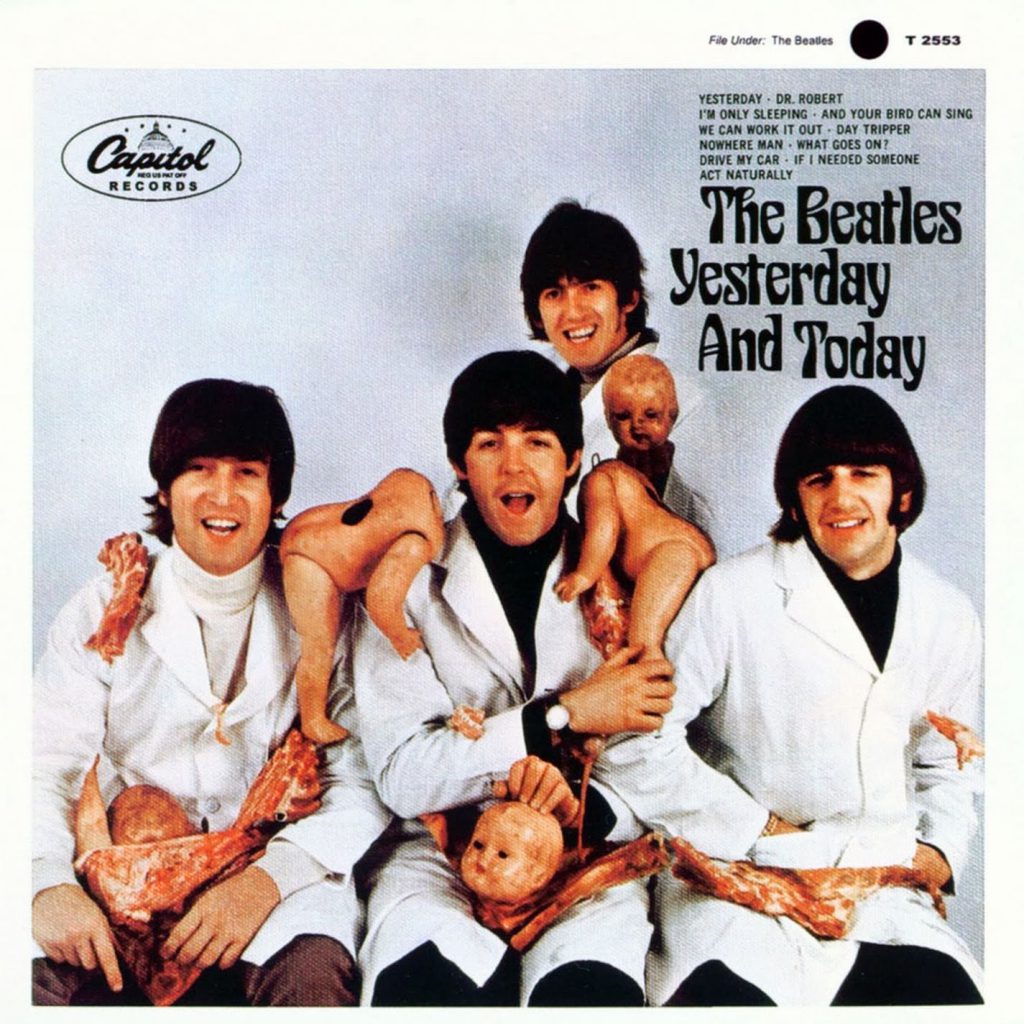
Alternate “trunk” cover #1:
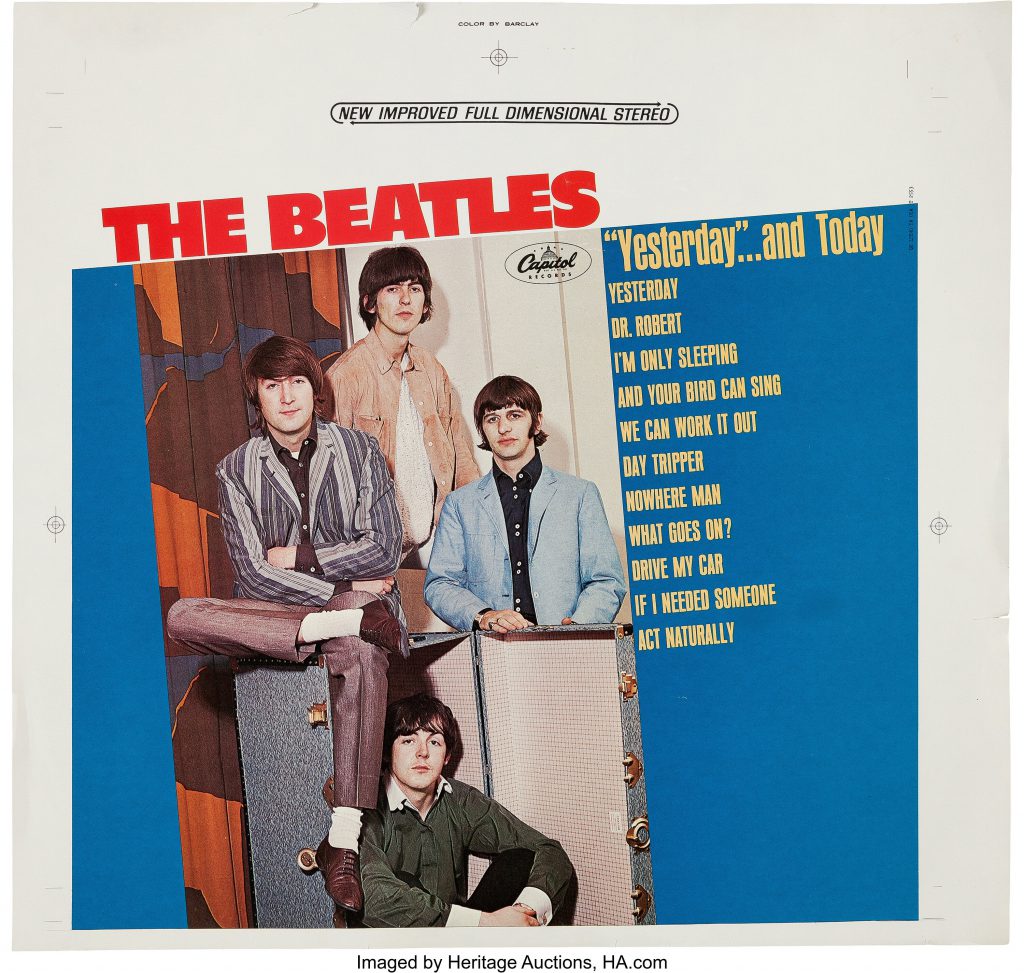
Alternate “trunk” cover #2:

Alternate “trunk” cover #3:

The final trunk cover using the psychedelic font used on the butcher cover:
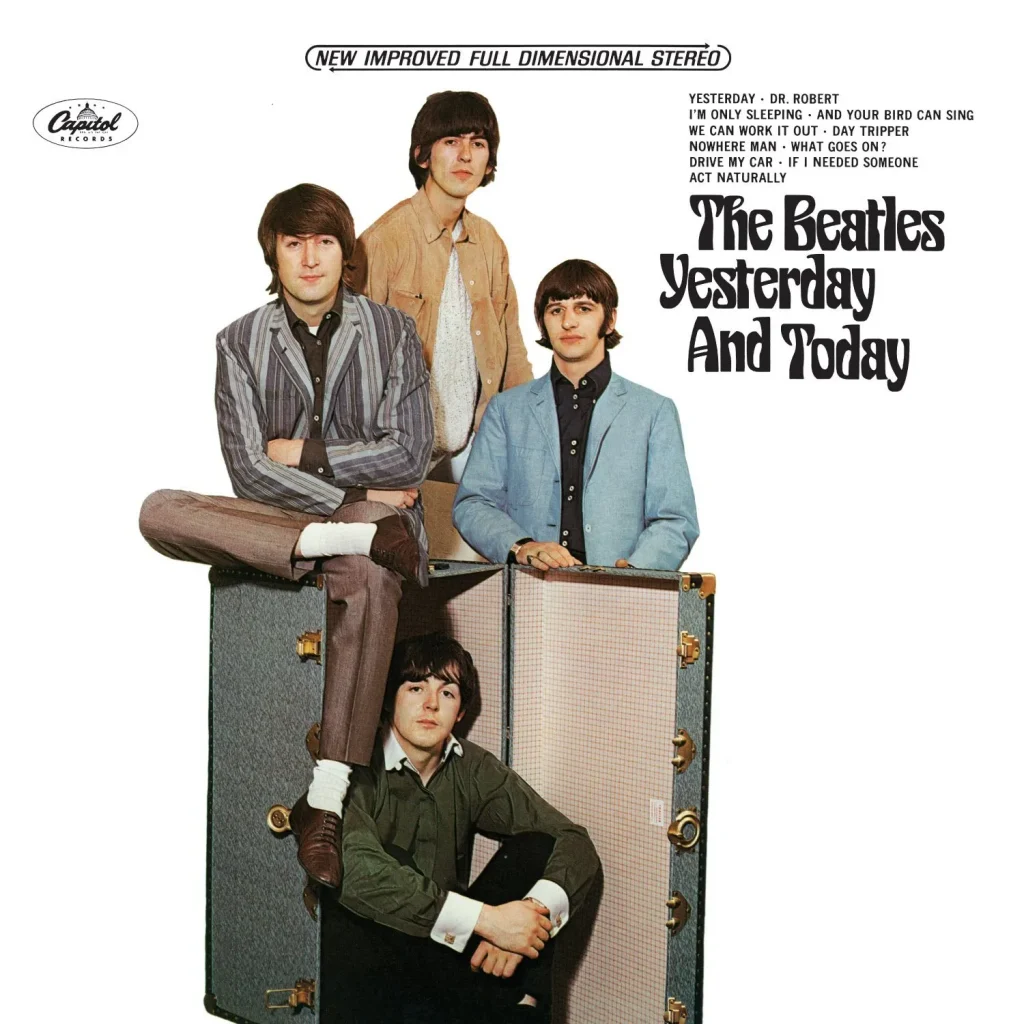
May 27, 1966
Dear Tom:
By carbon of my letter to Barry Cohen you have a list of the Beatle material sent.
Design number four is the one that Mr. Epstein and Marvin Schwarts agreed upon. Because it was thought by some Capitol people that this design did not present as salable image as some others might, we include designs one, two, and three for Mr. Epstein’s consideration. Mr. Livingston would prefer one of these but, of course, the decision is with Mr. Epstein.
Next, is the matter of the paper on which we will print the cover. Again, Mr. Epstein and Marvin Schwarts agreed to using an “Angel type” soft text paper instead of our standard “pop” paper. Our objection to this is based upon the increased cost ($20,000) and the additional time it takes to produce an album on this special paper stock. Mr. Livingston does not think that mentioning the increased cost would effect a change of decision, but there is a chance that pointing out the built-in time delay might. This delay could run to as much as three weeks and for these reasons:
- We warehouse the standard “Pop” stock in carload quantities and always have an ample supply. But in the case of the “Angel-type” soft stock we have only a very small supply on hand as our usual needs are for only a few thousand a month. To obtain sufficient stock for a million print run such as the Beatles, we need go to the paper mill and have them make it. True, we were able to locate small quantities already made in various areas, but it is not near enough for the complete print run.
- The second delay comes at the factory film wrapping. As you know, all albums are film wrapped automatically using a Kryovak machine. This works fine on the “Pop” type paper because it has a mar-proof finish. But on “Angel-type” soft stock the feeding wheel marks the cover. So we are into a hand operation which is very slow.
On this matter of delay Mr. Livingston wants you to base your attempt to convince Mr. Epstein that the standard “Pop” paper stock is the most practical and as the paper is completely covered with the artwork and then film wrapped, the difference in appearance is almost non-existent.
When you reach an agreement as to which design and which paper stock we are to use phone:
George Jones, home phone 645-2577, or if unable to roach him
Bay Polley, home phone AT 6-9492, or
George Osaki, home phone 320-2866If the decision is not reached until Capitol Tower business hours, then phone George Jonos at the Tower, but I want to again stress the advantage of getting the approvals Monday, May 30, 1966.
Lots of luck,
Ray Polley
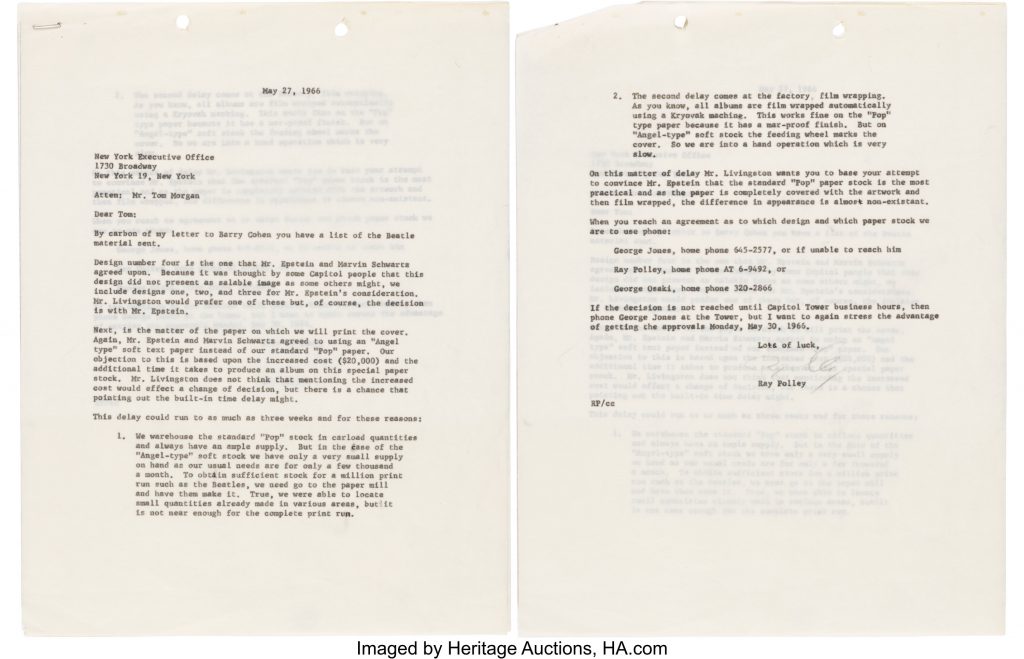
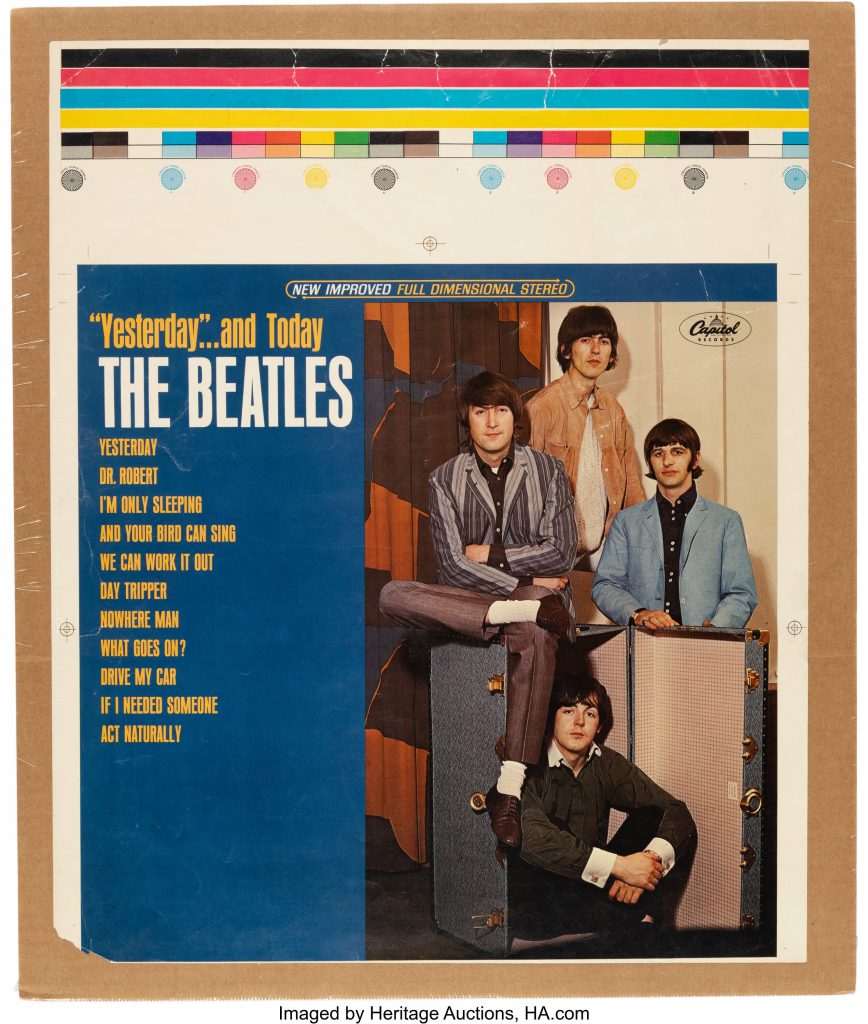
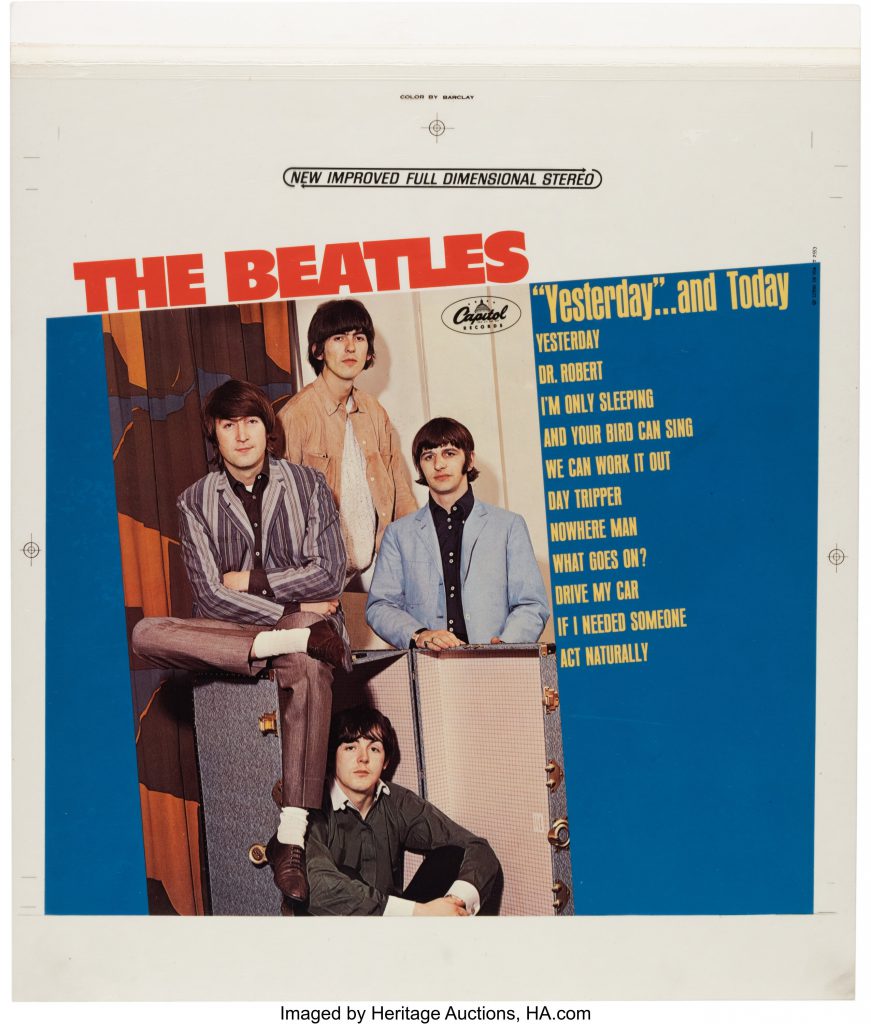
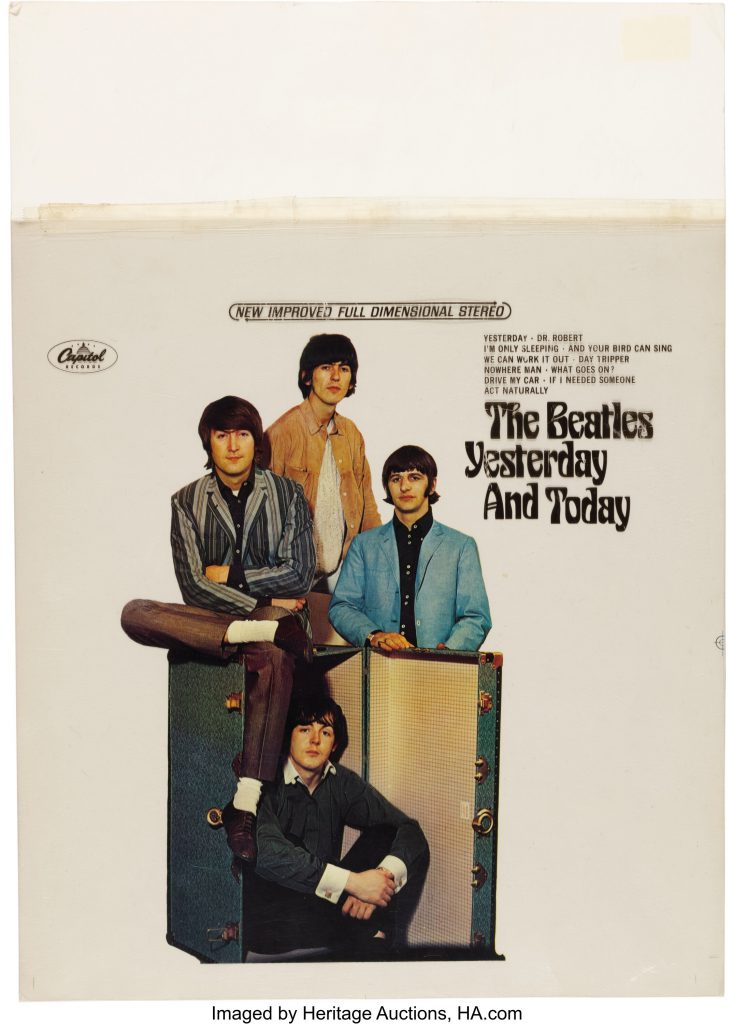
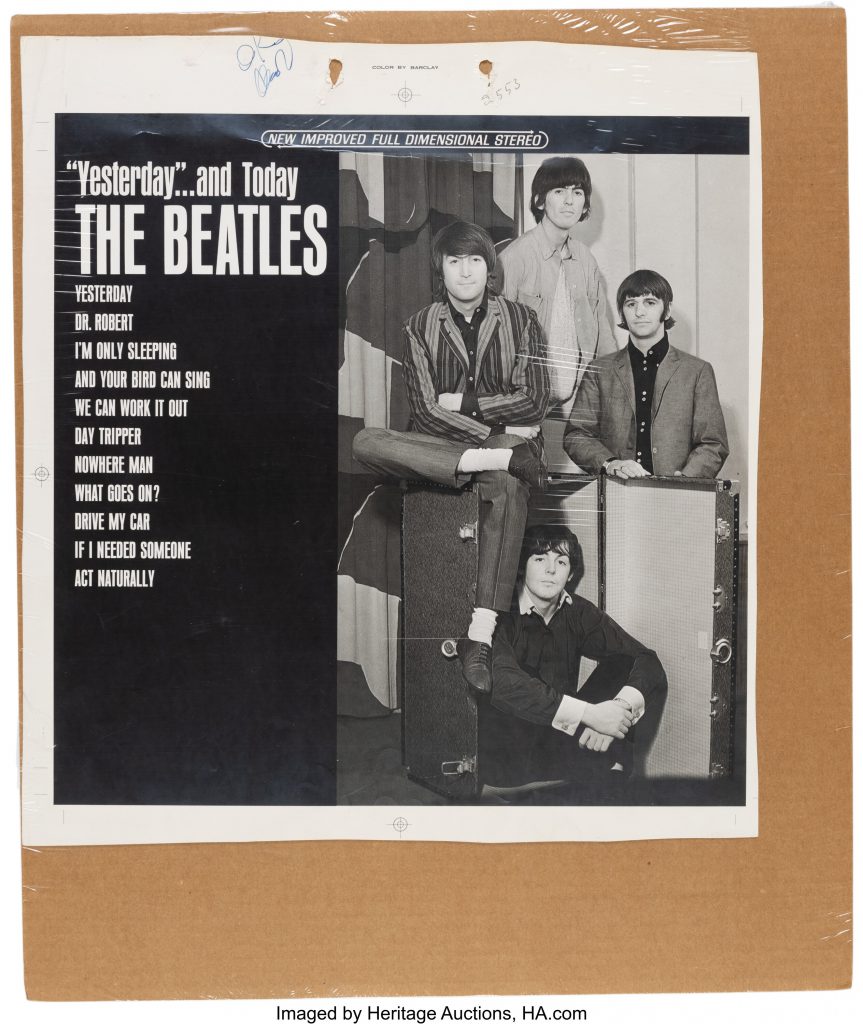
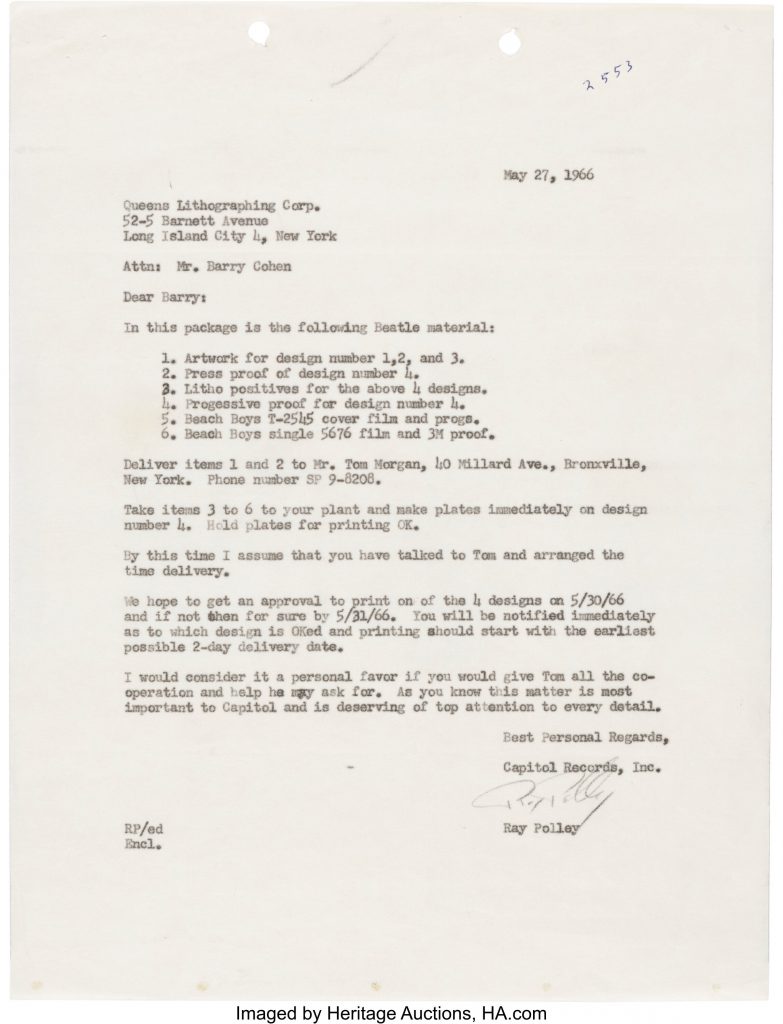
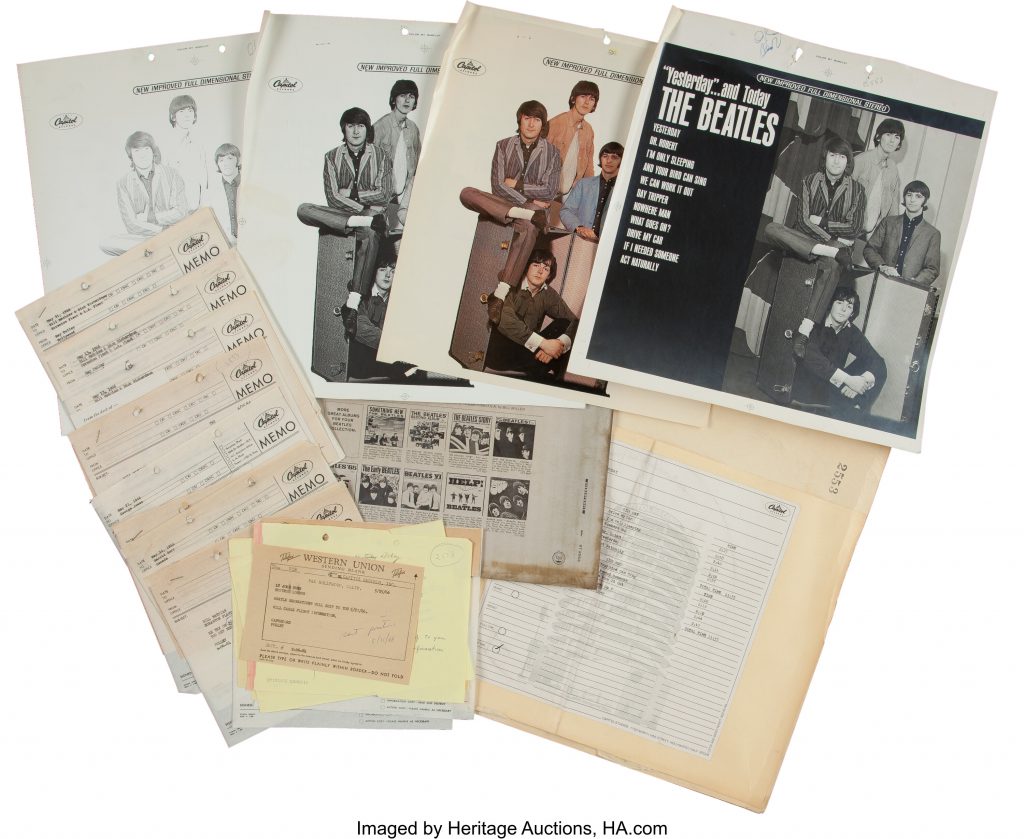
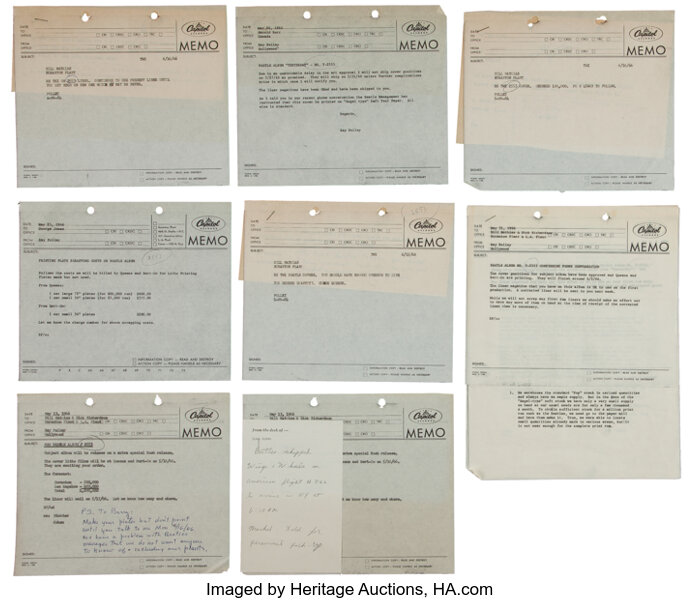
The Beatles Diary Volume 1: The Beatles Years
"With greatly expanded text, this is the most revealing and frank personal 30-year chronicle of the group ever written. Insider Barry Miles covers the Beatles story from childhood to the break-up of the group."
We owe a lot to Barry Miles for the creation of those pages, but you really have to buy this book to get all the details - a day to day chronology of what happened to the four Beatles during the Beatles years!

Notice any inaccuracies on this page? Have additional insights or ideas for new content? Or just want to share your thoughts? We value your feedback! Please use the form below to get in touch with us.